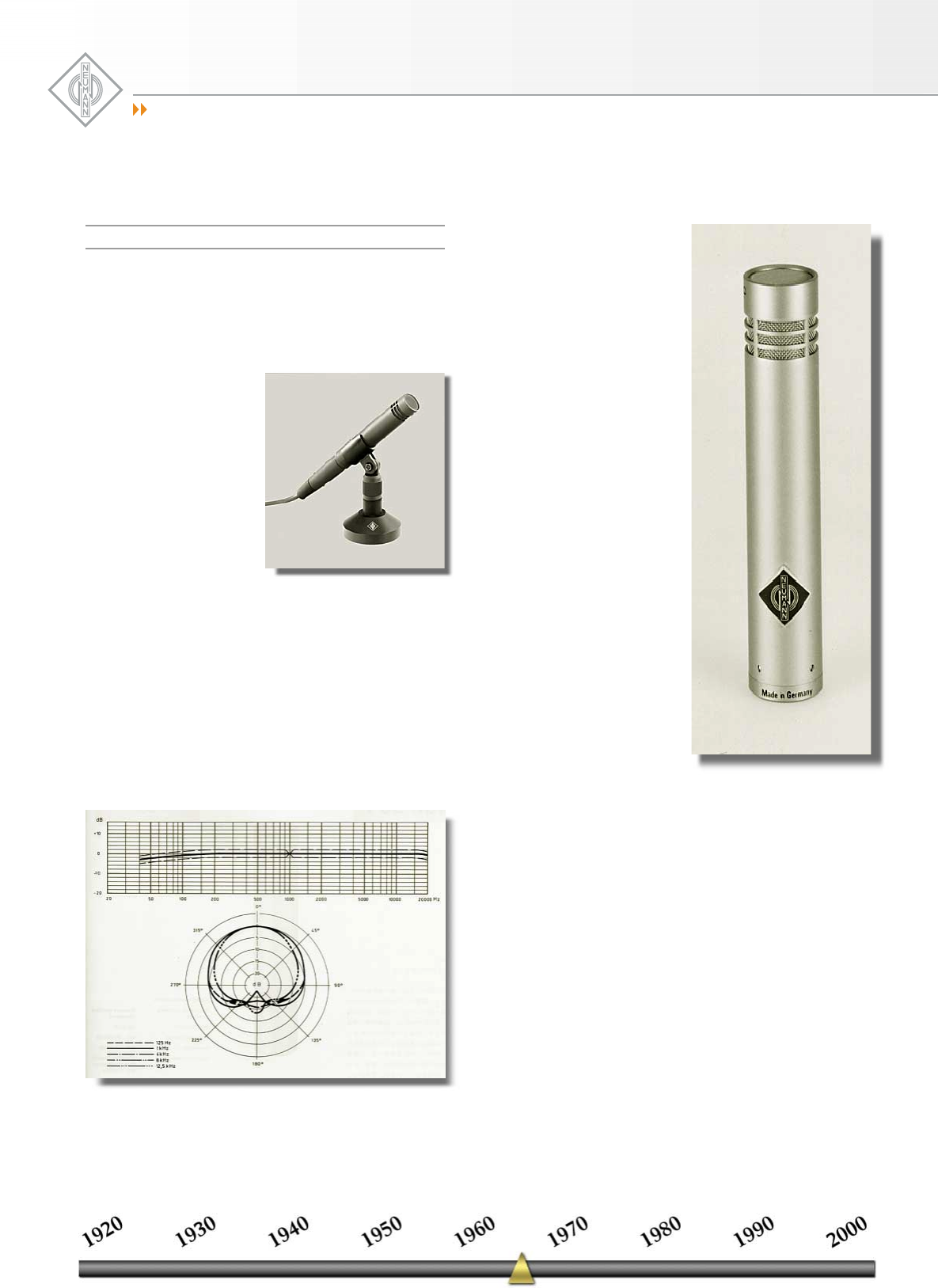
neumann.berlin
the microphone company
KM 84 - 48 Volt Phantom Powered
From the very start, Neumann has maintained close rela-
tions with the people using its products. The suggestions,
wishes and demmands of these important customers often
lead to the development of new standards and the intro-
duction of novel techniques. One particularly important
development began with a
visit by Neumann staff to
Oslo, Norway, in 1966.
Norwegian State Televi-
sion planned to outfit a
new station which would
use transistor-based micro-
phones. Instead of using
the German 12 Volt wire
circuit system, the engi-
neers wished to use the
station’s existing central
48 Volt DC system. Neu-
mann suggested a circuit in which the microphone could
be operated with this 48 Volt supply by dividing the volt-
age across the two modulation pins and developing the nec-
essary current in reference to the cable shield.
This system is devised by using two matching 6.8 kOhm
resistors where the positive pole of both modulation wires
are fed to these resistors and recovered in the microphone.
Due to the high degree of balance (because of the careful-
ly matched resistors), no potential difference voltage ex-
ists between the modulation wires. Thus the term “Phan-
tom Power” has come to be understood as a powering sys-
tem where no voltage is developed between the modula-
tion pins of the microphone and thus “does not appear”
unless used with a corresponding microphone.
This type of powering sys-
tem has several advantag-
es, one being particularly
important in standard ap-
plications. Phantom pow-
ering allows for the con-
nection of dynamic and
ribbon mics without dam-
age. All microphones with
a symmetrical, unground-
ed output can also be used
with this powering
scheme. Even tube micro-
phones, with their sepa-
rate power supplies, can be
connected to a Phantom
supply without problems.
The first microphone
made with this technolo-
gy was the Neumann
KM 84, a miniature mi-
crophone with a near per-
fect cardioid characteristic
(due to the excellent
KM 64 capsule it con-
tains). The circuit was
made quite small so that
the mic could be made
with a diameter of only
21 mm and a length of
110 mm. With phantom
powering, a truly “minia-
ture microphone” was now possible!
The KM 84 was designed with a 10 dB attenuation switch,
therefore allowing the microphone to be used up close with
loud instruments. By placing the pad at the gate of the field-
effect transistor (FET), this “pre-attenuation” prevents the
hot capsule signal from overloading the front end of the
amplifier. With the switch on, a sound pressure level of
130 dB can pass through without distortion.
What began as a modest interest in this new type of pow-
ering (and using a new connector for microphones) in 1966
resulted with the KM 84 as being one of the great success
stories in Neumann’s history. Following its introduction,
all microphone manufacturers began to produce or modi-
fy models for 48 volt phantom powering and this system
has since become the world standard for condenser micro-
phone powering.
